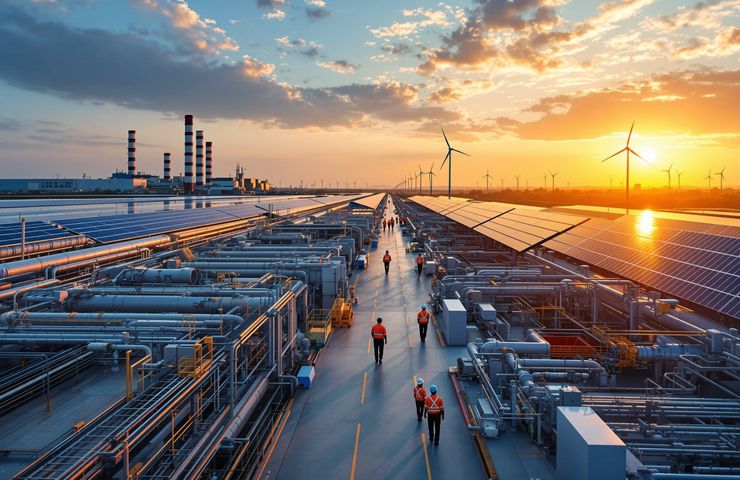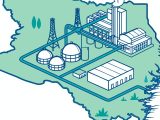
China’s Electrolyzer Prices Halved in Three Years
November 20, 2025Picture yourself under the blazing sun of Northwest China, where row upon row of solar panels feeds a huge electrolyzer plant. Out here in Kuqa, engineers and local officials are buzzing about a true game-changer: Electrolyzer Prices have plunged nearly 50% over the last three years. It’s a prime example of China Electrolyzers stepping up in the global Green Hydrogen arena, with annual manufacturing capacity zooming past 39 GW—roughly 60% of the world’s total.
A Game-Changer in Pricing
Back in 2022, tender prices for a standard 1 MW alkaline electrolyzer hovered around $800 per kW. Fast-forward to today, and thanks to cutthroat domestic competition and hefty subsidies, that sticker price is sitting near $400 per kW. What does that mean? Developers can dream up Hydrogen Production projects that used to be pipe dreams—turning green hydrogen from a niche play into a cornerstone of China’s Renewable Energy strategy.
Scaling Up Production
China’s electrolyzer hotspots stretch from Guangdong all the way to Xinjiang, but it’s the northwest where the magic really happens. With over 39 GW of production capacity online—against global demand of only about 2 GW—local factories are cranking full throttle. Of course, running flat out has its downsides: razor-thin margins and oversupply mean most producers are in the red right now. Still, this breakneck scale-up shows just how determined China is to dominate Electrolyzer Prices and cement itself as the world’s go-to electrolyzer manufacturer.
Powering Landmark Projects in Kuqa
Take the flagship Kuqa green hydrogen project. Bathed in strong wind and sunshine, this facility aims to churn out up to 50,000 tons of hydrogen each year by 2026. Local governments are sweetening the deal with 10–20% subsidies on equipment costs, while the Ministry of Industry and Information Technology (MIIT) sets the rules of the road and keeps everyone competing healthily. It’s this blend of grassroots incentives and top-down coordination that’s supercharging Hydrogen Production in the resource-rich northwest.
Technology: Alkaline vs. PEM
Most Chinese makers stick with the trusty alkaline electrolyzer, thanks to its straightforward materials and solid supply chains. These systems typically run at a 30–40% minimum load to keep costs in check—trading some flexibility for lower capital outlay. On the flip side, PEM electrolyzers boast quicker response times and higher current densities, but they lean on pricey precious metals and imported parts. According to the China International Engineering Consulting Corporation (CIECC), domestic PEM units are still chasing their European peers when it comes to efficiency and lifespan.
Collaboration and Policy Support
This boom didn’t spring up overnight. In November 2025, the MIIT warned against “excessive competition” and asked provinces to sync up their hydrogen roadmaps. Reports from CIECC and other industry groups feed into national standards, while local governments fine-tune subsidies to suit their strengths. Throw in partnerships with state-owned power giants and nimble private startups, and you’ve got a network that knits policy, research, and manufacturing into a powerhouse growth engine.
Positive Impacts
Thanks to these steep price cuts, Green Hydrogen is no longer just a buzzword. Cheaper equipment drives down the levelized cost of hydrogen, sparking new projects from Europe to Asia and beyond. Every gigawatt built hones manufacturing expertise, reinforcing domestic supply chains and accelerating global decarbonization in industries like steelmaking, chemicals, and heavy transport.
Challenges on the Horizon
But it’s not all clear skies. Fierce price wars have left nearly every electrolyzer plant running at a loss, dependent on subsidies to survive. Industry insiders warn of shakeouts—or even bankruptcies—if demand doesn’t catch up. Export dreams might hit roadblocks in the US and EU, where policymakers worry about dumping. And with flexibility often sacrificed for lower costs, Chinese units could struggle in markets that need dynamic response to renewable intermittency.
Still, there’s reason to be optimistic. China’s aggressive push has driven down costs, ignited innovation, and shown what scale can do. As global appetite for green hydrogen grows, everyone will be watching: will China’s electrolyzer fleet keep powering tomorrow, or will the market reshape itself around sustainable profits? Either way, this electrifying chapter of Hydrogen Production is giving us a real glimpse at the future we’ve been chasing.


 With over 15 years of reporting hydrogen news, we are your premier source for the latest updates and insights in hydrogen and renewable energy.
With over 15 years of reporting hydrogen news, we are your premier source for the latest updates and insights in hydrogen and renewable energy.